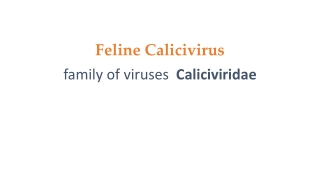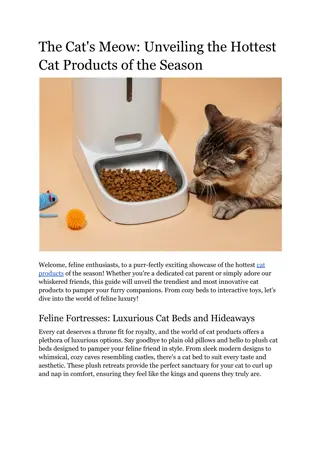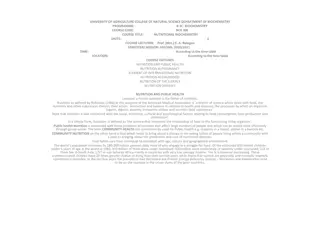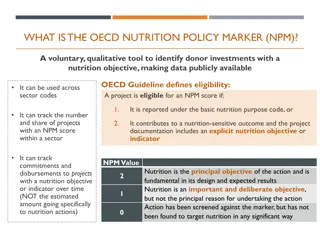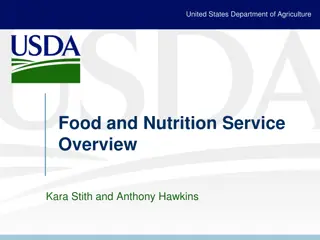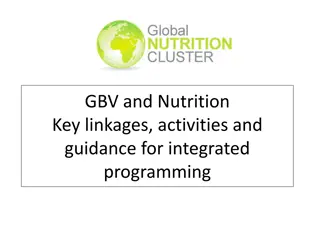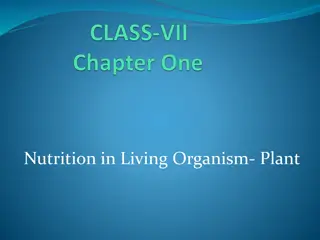Understanding Feline Nutrition and Behavior: A Journey Through History
Delve into the fascinating world of feline nutrition and behavior, exploring how cats have evolved alongside humans throughout history. From their domestication to being obligate carnivores, discover the unique traits and instincts that drive every aspect of a cat's life.
Download Presentation

Please find below an Image/Link to download the presentation.
The content on the website is provided AS IS for your information and personal use only. It may not be sold, licensed, or shared on other websites without obtaining consent from the author. Download presentation by click this link. If you encounter any issues during the download, it is possible that the publisher has removed the file from their server.
E N D
Presentation Transcript
Feline Nutrition and Behavior 101 With Cassandra Morgan Feline Nutrition and Behavior Consultant Zen Cat Feline Behavior Consulting
Cats in History We first think of cats in history as being domesticated by the ancient Egyptians. However, in 2004, an archaeological dig revealed a Neolithic grave with a human lovingly buried with their cat. This significantly moves the previous estimated time line where cats were thought to have been domesticated in China 5,300 years ago to more than 9,500 years ago. (yay science) The time when cats were domesticated doesn t really matter, however. What matters is WHY
The Domestication of Felis catus It s very important to note that humans did not domesticate cats. Cats allowed themselves to become friendly with humans, because they saw it as an end to their means. Cats were first drawn to human settlements for the same reason their prey was drawn there FOOD and SHELTER. Rodents saw a schmorgashborde of food stored in one place. Cats saw a schmorgashborde of rodents in one place. While being one of the most efficient warm-blooded killing machines on the planet, cats find themselves as both Predator and Prey While cats may kill rodents, birds, lizards, insects, etc They also find themselves the victims to larger predators In exchange for killing the rodents in the human settlements, cats were given a safe place to live.
The Evolution of Domestication Ancient Egyptians Buddhist Monks Medieval Farmers Sailors
Whats in it for Me? Every decision a cat makes is based on 1 thought: HOW WILL I SURVIVE TODAY? As a PREDATOR: Survival means finding food efficiently As PREY: Survival means avoiding other predators Dogs live to please, Cats live to survive When you want a cat to do something, there must be something in it for them
My Ancestory.Cat More Closely Related THAN Boxer is to Pitbull
Obligate Carnivore Cats are Obligate Carnivores They are unable to derive proper nutrients from plant matter The only non-animal based food they eat is what s in the stomachs of their prey
How Pet Food is Made Pet Kibble on Conveyor Cereal on Conveyor Ingredients are mixed together, dolloped onto a conveyor by a machine, and sent through a giant oven. After cooking, the kibble is sent on to the flavoring and coloring stations. Granted, not all kibble contains artificial color, but all of it has the flavor sprayed on the outside when complete.
How to Read a Pet Food Label Pet Food companies list ingredients by weight BEFORE cooking, not by quantity. Best Results Canned: Minimum Crude Protein 12% Minimum Moisture Content 70% Best Results Kibble: Minimum Crude Protein 32%
Limited Ingredient/Grain-Free Diets Beware of ingredients like Sweet Potato Rice Potato Pea Starch Many foods use these as more expensive fillers, but they often contain a minimum of 45% carbohydrate, which is several times more than what any cat could need on a daily basis. Cats need to derive at least 70% of their water intake from their food. Most cats that are fed kibble-only diets are living in a semi-dehydrated state, especially since many artificial colorings are diuretics. This is why the number one medical cause of death in cats is Kidney and Renal issues, and why cats seem so prone to Urinary Tract Infections. Diet is a leading cause to many health issues which can eventually lead to litter box aversion, and is the number one reason cats are surrendered to shelters from a once loving home.
Sources to Consider Idiosyncratic nutrient requirements of cats appear to be diet-induced evolutionary adaptions by JG Morris of UC Davis Pottenger s Cats great YouTube Video: Pottengers Cats-Diet Will Affect Future Generations www.LongLivingPets.com (18 years into the 30 year study) Raw Meat-Based Diets in Dogs and Cats -Veterinary Sciences 2017 Raw meat based diet influences faecal microbiome and end products of fermentation in healthy dogs BMC Veterinary Research, 13, 65 NZ study on animal nutrition, by AgResearch, Massey University (published in Life, Bio and Health Sciences journal) Perceptions, practices, and consequences associated with foodborne pathogens and the feeding of raw meat to dogs Canadian Veterinary Journal The Biologically Appropriate Food Concept and the Dietary Needs of Dogs and Cats Champion PetFoods (Orijen White Paper) The Biologically Appropriate Food Concept and the Dietary Needs of Dogs and Cats Veterinary Sciences Journal


